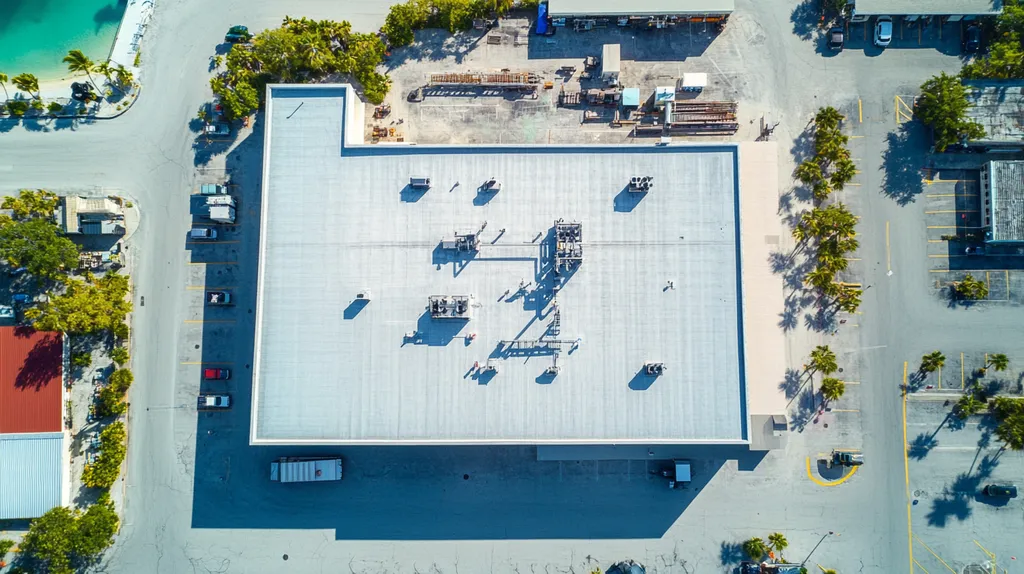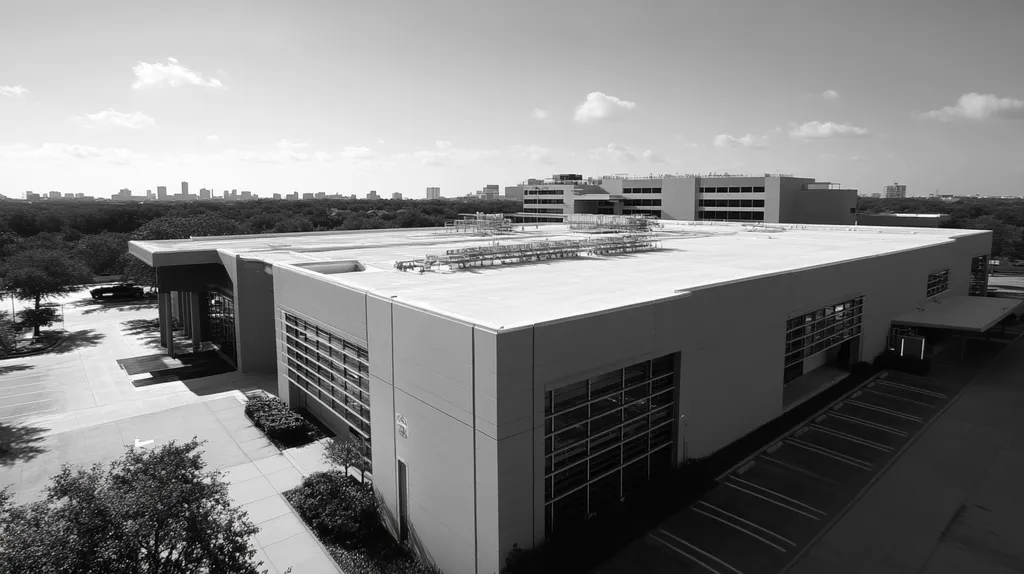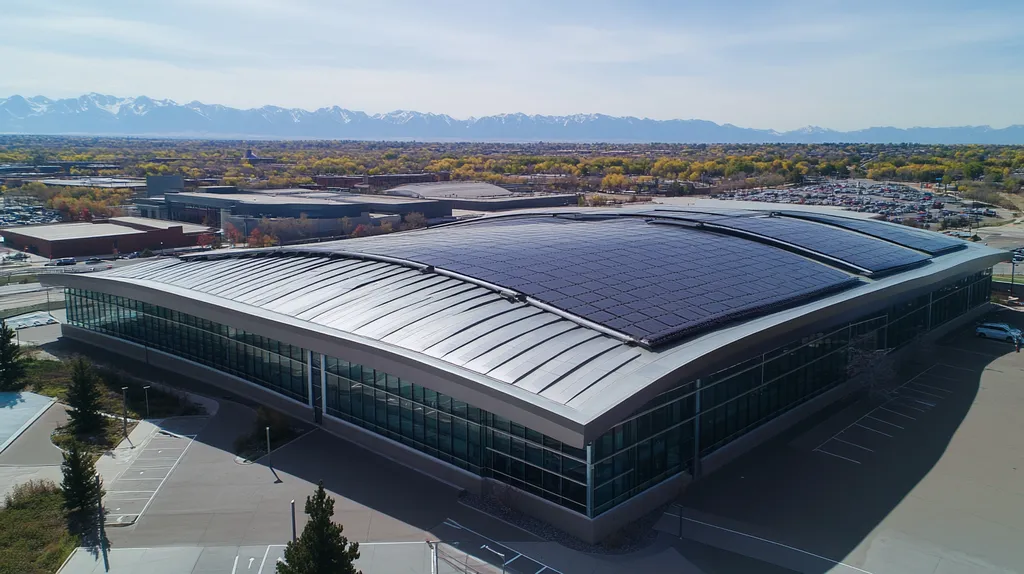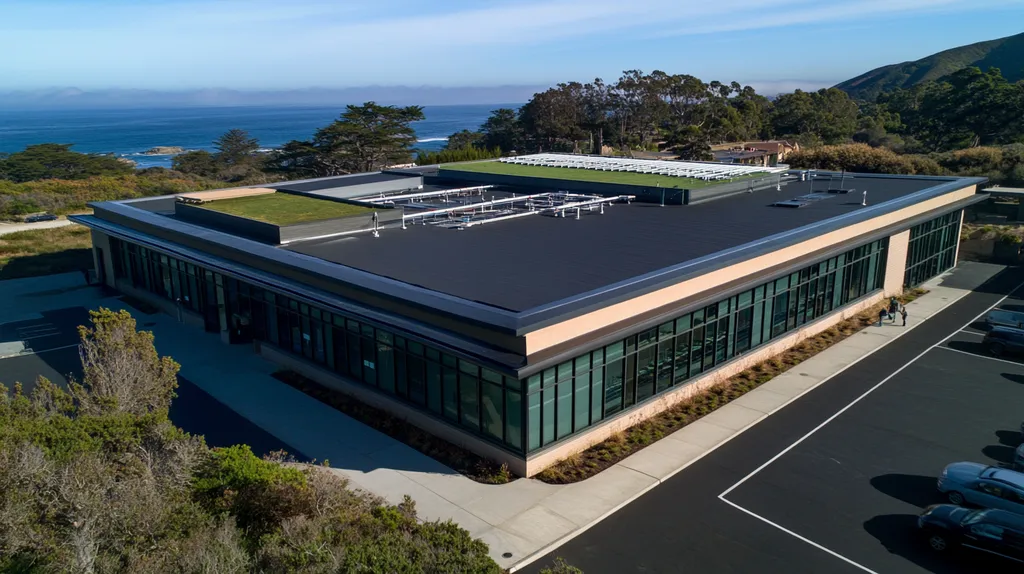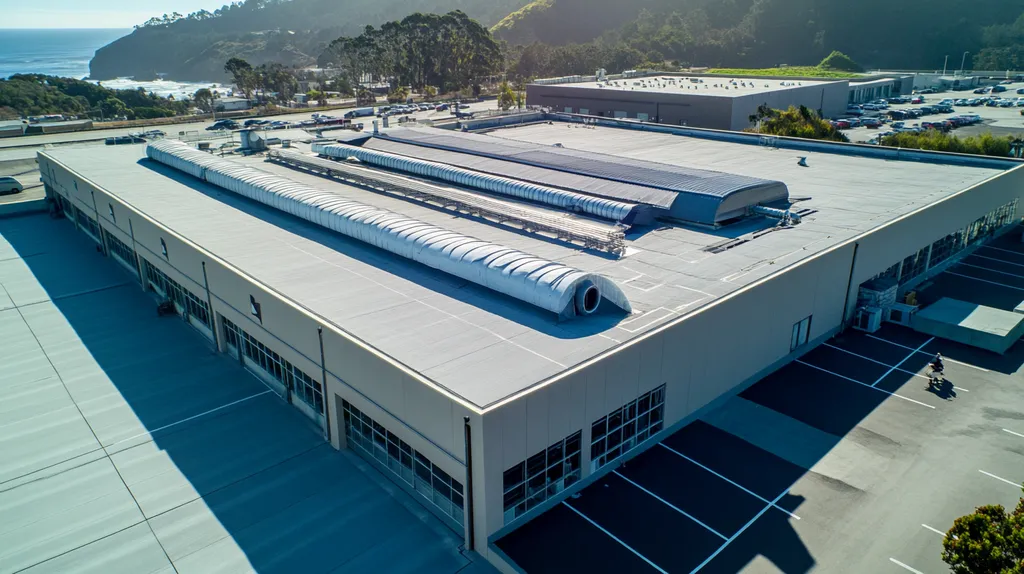Welcome to today’s Battle Royale featuring two roofing heavyweights: “Spray Foam” in the east corner versus “Fiberglass Batt” in the west!
Tonight’s showdown pits these contenders against each other across six punishing rounds designed to test every aspect of their performance for Commercial Roof Insulation.
At stake? Millions in potential costs, decades of building protection, and the critical performance demands of modern commercial and industrial facilities.
Our professional judging panel will evaluate each round on technical merit, real-world performance, and value delivery. After all six rounds, we’ll declare our ultimate champion.
Ladies and gentlemen, facility managers and building owners… it’s time to rumble!
ROUND 1: INITIAL COSTS & INSTALLATION
In today’s volatile energy market, commercial property owners face mounting pressure to optimize their building envelope performance. The insulation choice for a commercial roof can make or break energy efficiency goals, with potential impacts ranging from tens to hundreds of thousands of dollars annually in operational costs.
While initial costs often drive decision-making, savvy facility managers understand that installation quality and project timing can have far greater long-term financial implications than material expenses alone.
Material Expenses
Spray foam insulation provides a seamless and effective barrier against air and moisture intrusion, particularly valuable for commercial buildings with irregular roof shapes. Its superior performance comes at a premium, typically costing 2-3 times more per square foot than traditional options. (source: Rmax)
Fiberglass batt insulation offers a more budget-friendly initial investment, making it attractive for projects with tight capital constraints. However, its effectiveness relies heavily on precise cutting and fitting to maintain thermal performance.
When comparing pure material costs, fiberglass batt holds a clear price advantage. Yet this advantage must be weighed against potential long-term energy losses from gaps and compression.
Installation Complexity
Spray foam application requires specialized equipment and certified installers, limiting contractor options but ensuring consistent quality. The foam’s expanding properties automatically seal gaps and create an unbroken thermal barrier, reducing installation errors.
Fiberglass batt installation appears straightforward but demands meticulous attention to detail. Proper fitting around mechanical systems, lighting fixtures, and structural elements requires significant labor time to achieve optimal performance.
While both materials have their installation challenges, spray foam’s self-sealing properties and reduced potential for human error give it an advantage in this category.
Project Timeline
Spray foam installation progresses rapidly once prep work is complete, with most commercial projects requiring only 1-2 days for the actual application. The quick-curing formula allows for same-day inspection and project completion.
Fiberglass batt installation can stretch over several days or weeks, depending on roof complexity. Each section requires careful measurement, cutting, and positioning to ensure proper coverage and minimize thermal bridging.
The condensed timeline of spray foam installation translates to reduced labor costs and minimal business disruption, making it the clear winner for project efficiency.
ROUND 1 WINNER: SPRAY FOAM
ROUND 2: DURABILITY & LIFESPAN
Commercial roofing systems face relentless challenges from extreme weather events, temperature fluctuations, and environmental stressors that can compromise insulation performance. With replacement costs running into hundreds of thousands of dollars, the durability and longevity of insulation materials directly impact a facility’s operational budget and business continuity.
Making the wrong choice can lead to premature system failure, creating a cascade of problems from energy waste to structural damage. Understanding how different insulation materials perform over time is crucial for protecting your investment.
Durability Under Extreme Conditions
Weather extremes and temperature cycling put tremendous stress on commercial roof insulation. High winds, driving rain, and dramatic temperature swings can degrade materials and compromise performance over time.
Spray foam insulation creates a seamless, monolithic barrier that maintains its structural integrity under harsh conditions. Its closed-cell structure resists water penetration and maintains R-value even after years of thermal cycling.
Fiberglass batt insulation is more vulnerable to environmental stresses, particularly moisture intrusion. When exposed to humidity or condensation, fiberglass can compress, settle, and lose significant insulating value.
In extreme conditions testing, spray foam demonstrates superior resilience and consistent performance, giving it a clear advantage in durability.
Longevity and Maintenance Requirements
The expected service life of insulation materials significantly impacts total ownership costs. Regular maintenance and potential replacement expenses must factor into long-term planning.
Spray foam typically maintains its insulating properties for 20-30 years with minimal maintenance requirements. Its rigid structure and chemical stability prevent degradation, settling, or compression over time.
Fiberglass batt generally requires inspection and maintenance every 5-7 years, with partial replacement often needed within 15 years. Settling, moisture accumulation, and physical damage can necessitate earlier intervention.
The extended lifespan and reduced maintenance needs of spray foam provide substantial long-term cost advantages over fiberglass alternatives.
Resistance to Pests and Environmental Factors
Beyond weather exposure, insulation must withstand biological and chemical challenges that can compromise performance. Pest infestation, mold growth, and air pollutants pose serious threats to system integrity.
Spray foam’s solid structure and inert chemistry make it naturally resistant to pests, mold, and bacterial growth. Its seamless application eliminates entry points and nesting spaces for rodents and insects.
Fiberglass batt can become a haven for pests seeking nesting materials. Its fibrous structure also provides an ideal environment for mold growth when moisture is present, leading to deterioration and potential health concerns.
The superior resistance of spray foam to biological and environmental threats makes it the clear winner in this category.
ROUND 2 WINNER: SPRAY FOAM
ROUND 3: PERFORMANCE FACTORS
In today’s energy-conscious market, commercial roof insulation performance can mean the difference between profit and loss. Buildings with suboptimal insulation waste up to 40% of their heating and cooling energy, directly impacting operational costs and environmental footprint.
As energy prices continue to surge, the stakes have never been higher for making the right insulation choice. The performance differences between materials can translate into hundreds of thousands in operational costs over a building’s lifetime.
Thermal Resistance and Energy Efficiency
Thermal resistance (R-value) stands as the primary measure of insulation effectiveness. Higher R-values indicate superior resistance to heat flow, directly affecting a building’s energy consumption and operating costs.
Spray foam delivers exceptional thermal performance with R-values ranging from 6.0 to 7.0 per inch. Its seamless application eliminates thermal bridges and maintains consistent performance across the entire roof surface.
Fiberglass batt typically achieves R-values between 2.9 and 3.8 per inch. Its effectiveness can decrease significantly when compressed or improperly installed, leading to inconsistent thermal protection.
Spray foam demonstrates clear ADVANTAGE in thermal resistance.
Moisture Control and Air Sealing
Effective moisture control prevents condensation, mold growth, and structural deterioration. Air sealing capabilities directly impact both energy efficiency and indoor air quality.
Spray foam creates an impermeable barrier against both moisture and air infiltration. Its expanding properties seal every crack and penetration, preventing condensation within the roof assembly.
Fiberglass batt offers minimal resistance to air movement and can absorb moisture, reducing its insulating effectiveness. Even small gaps between batts can create pathways for air and moisture migration.
The superior sealing properties of spray foam earn it another clear ADVANTAGE.
Dimensional Stability
Dimensional stability ensures consistent performance throughout seasonal temperature changes and building movement. Insulation must maintain its shape and position to deliver reliable thermal protection.
Spray foam remains dimensionally stable once cured, maintaining its form and adhesion regardless of temperature fluctuations. Its rigid structure resists settling and shifting, ensuring long-term performance.
Fiberglass batt can shift, settle, or compress over time, creating voids that compromise its insulating value. These changes often go unnoticed until energy bills spike or moisture problems develop.
Spray foam claims another ADVANTAGE in dimensional stability.
ROUND 3 WINNER: Spray Foam
ROUND 4: MAINTENANCE REQUIREMENTS
In today’s commercial real estate market, maintenance oversight can make or break a building’s operational budget. With roof replacement costs averaging $250,000-500,000 for mid-sized commercial buildings, choosing insulation that minimizes maintenance burden becomes crucial for long-term facility management.
The wrong insulation choice can cascade into extensive repair needs, moisture damage, and premature system failure. Understanding maintenance requirements helps property managers protect their investment and avoid costly emergency repairs.
Inspection and Assessment Requirements
Spray polyurethane foam (SPF) forms a seamless, monolithic barrier that simplifies inspection procedures. When the two liquid components combine during installation, they create a uniform layer that’s easy to assess for potential damage. (source: Nasi Roofing)
Regular visual inspections can quickly identify any surface deterioration or damage. The solid nature of spray foam means problems typically remain localized and easily detectable.
Fiberglass batt requires more frequent and intensive inspections to check for settling, compression, and moisture infiltration. Hidden damage can spread extensively before detection, necessitating comprehensive evaluation protocols.
Spray foam demonstrates clear ADVANTAGE in inspection requirements.
Repair and Remediation Procedures
When damage occurs to spray foam insulation, repairs can usually be completed with minimal disruption. Small areas can be patched without compromising the overall system integrity.
The self-adhering properties of spray foam ensure repairs integrate seamlessly with existing material. This characteristic reduces the risk of future failure points at repair locations.
Fiberglass batt repairs often require extensive removal and replacement of surrounding material. Even minor damage can necessitate large-scale remediation to maintain system effectiveness.
Spray foam claims another clear ADVANTAGE in repair procedures.
Long-term System Integration
Spray foam’s rigid structure maintains consistent contact with roof decking and penetrations over time. This stability reduces maintenance needs related to shifting or separation from adjacent building components.
The material’s resistance to moisture and air infiltration helps protect underlying roof structure, minimizing associated maintenance requirements for the entire roofing system.
Fiberglass batt tends to create ongoing maintenance challenges as it settles and loses contact with surrounding materials. This movement can compromise system integrity and require regular adjustments.
Spray foam earns a final ADVANTAGE in system integration.
ROUND 4 WINNER: Spray Foam
ROUND 5: SUSTAINABILITY CREDENTIALS
As environmental regulations tighten and energy costs soar, commercial property owners face mounting pressure to adopt sustainable building practices. Buildings account for nearly 40% of U.S. carbon emissions, with roofing insulation playing a pivotal role in environmental impact. Making the wrong insulation choice today can lock facilities into decades of excessive energy consumption and environmental damage.
The stakes extend beyond individual buildings to impact entire communities through increased carbon footprints, strained energy grids, and mounting landfill waste. Understanding the sustainability credentials of different insulation options has become essential for responsible facility management.
Energy Efficiency and Performance
Spray polyurethane foam (SPF) creates an airtight barrier that dramatically reduces heating and cooling losses. When the two liquid components combine during installation, they expand and harden into a seamless layer that maintains consistent performance throughout its lifetime. (source: Nasi Roofing)
The closed-cell structure of spray foam provides superior thermal resistance, typically achieving R-values of 6.0-7.0 per inch. This exceptional performance translates directly into reduced energy consumption and lower carbon emissions.
Fiberglass batt insulation offers more modest energy efficiency gains, with R-values ranging from 2.9-3.8 per inch. Its effectiveness depends heavily on installation quality and can degrade significantly if gaps or compression occur.
Spray foam demonstrates clear ADVANTAGE in energy efficiency.
Material Lifespan and Waste Reduction
The durability of spray foam insulation significantly reduces waste generation over time. Its rigid structure and chemical stability allow it to maintain performance for 30-50 years, minimizing the need for replacement and keeping materials out of landfills.
The material’s resilience against moisture, settling, and degradation ensures consistent performance throughout its extended lifespan. This longevity translates directly into reduced environmental impact from manufacturing and disposal.
Fiberglass batt typically requires replacement every 15-20 years due to settling, compression, and moisture damage. This shorter lifecycle creates a continuous stream of waste material and demands more frequent manufacturing of replacement products.
Spray foam claims another clear ADVANTAGE in waste reduction.
Environmental Impact and Manufacturing
Modern spray foam formulations incorporate renewable resources and recycled content, reducing reliance on virgin materials. Advanced manufacturing processes have significantly lowered the environmental impact of production while maintaining performance benefits.
The material’s superior insulating properties offset its manufacturing footprint through decades of reduced energy consumption. Innovative blowing agents have virtually eliminated ozone-depleting compounds from the production process.
Fiberglass batt production requires significant energy input and generates substantial manufacturing waste. While the material contains recycled glass content, its shorter lifespan and lower performance create a larger cumulative environmental impact.
Spray foam earns a final ADVANTAGE in environmental impact.
ROUND 5 WINNER: Spray Foam
ROUND 6: SPECIALIZED APPLICATIONS
Commercial building owners face increasingly complex challenges when selecting insulation for specialized applications. From data centers requiring precise temperature control to food processing facilities demanding absolute moisture prevention, the wrong choice can trigger catastrophic system failures costing millions in damages and lost revenue.
Today’s specialized commercial environments demand insulation solutions that can maintain performance under extreme conditions while meeting stringent regulatory requirements. The stakes have never been higher for facility managers tasked with protecting mission-critical operations.
Critical Environment Performance
Specialized facilities like pharmaceutical manufacturing, cold storage, and data centers require precise environmental control. Temperature fluctuations of even a few degrees can compromise products worth millions or trigger catastrophic equipment failures.
Spray foam creates an impermeable thermal envelope that maintains strict temperature parameters. Its seamless application eliminates thermal bridging while its closed-cell structure provides consistent performance even under extreme temperature differentials.
Fiberglass batt struggles to maintain the precise environmental conditions these facilities demand. Its susceptibility to settling and compression can create cold spots that threaten temperature-sensitive operations.
For critical environment applications, spray foam demonstrates clear ADVANTAGE.
Structural Enhancement Capabilities
Modern commercial facilities often require insulation that contributes to structural integrity, particularly in areas with high wind loads or seismic activity. The right insulation choice can significantly enhance building resilience.
Spray foam adds structural strength through its rigid bonding to the substrate. Its adhesive properties and compression strength improve overall roof deck stability while maintaining flexibility to accommodate building movement.
Fiberglass batt provides minimal structural benefit and can actually reduce system strength if improperly installed. Its lack of adhesion to surrounding materials means it cannot contribute to building resilience.
In structural enhancement applications, spray foam claims another clear ADVANTAGE.
Contamination Control Requirements
Facilities like clean rooms, hospitals, and food processing plants must prevent particle contamination at all costs. Insulation materials that shed particles or harbor contaminants can compromise entire operations.
Spray foam’s solid structure prevents particle generation and creates an impenetrable barrier against contamination. Its monolithic surface leaves nowhere for particles to accumulate or pathogens to grow.
Fiberglass batt’s fibrous composition makes it unsuitable for contamination-sensitive environments. Its tendency to release particles and trap contaminants creates unacceptable risks in these specialized applications.
For contamination control requirements, spray foam earns a final ADVANTAGE.
ROUND 6 WINNER: Spray Foam
AND THE WINNER IS…
Ladies and gentlemen, after six punishing rounds of technical evaluation, we have our undisputed champion! In a clean sweep victory across all categories, SPRAY FOAM INSULATION has dominated this commercial roofing showdown!
This powerhouse performer crushed the competition with superior thermal resistance, unmatched durability, and game-changing maintenance advantages. From critical environment performance to sustainability credentials, spray foam proved why it’s the heavyweight champion of modern commercial roofing.
But don’t count fiberglass batt out entirely, folks! This veteran contender still delivers solid performance for budget-conscious projects with simple geometries and moderate performance demands. When initial costs matter more than long-term optimization, fiberglass batt remains a reliable choice.
Remember, building champions: Every facility brings its own unique requirements to the ring. Local climate conditions, structural specifications, and operational demands all influence your ideal insulation strategy. While spray foam dominated today’s match-up, your specific situation may favor a different approach. Always consult qualified roofing professionals who can evaluate your building’s particular needs.
In the high-stakes world of commercial roofing, there’s no substitute for making an informed choice. Choose your insulation champion wisely – because when that final bell rings, your building’s performance is on the line!
FREQUENTLY ASKED QUESTIONS
Q. What are the initial costs for commercial roof insulation?
A. The initial costs vary between insulation types, with spray foam typically costing more upfront. However, fiberglass batt offers a cheaper option but may incur long-term energy losses. It’s essential to consider not just material expenses but also installation quality to make a financially sound decision.
Q. How does insulation durability affect industrial roof performance?
A. Durability impacts long-term costs and operational efficiency. Spray foam is more resistant to harsh conditions, maintaining its integrity over time. In contrast, fiberglass batt can degrade when exposed to moisture, leading to premature failures, energy loss, and costly repairs.
Q. What are the performance factors for commercial roof insulation?
A. Performance factors include thermal resistance or R-value, moisture control, and dimensional stability. Spray foam insulation generally offers superior R-values and better moisture barriers, helping reduce energy costs while maintaining a consistent thermal envelope.
Q. How often should you inspect insulation on a commercial roof?
A. Regular inspections for insulation are crucial to maintain effectiveness. Spray foam usually requires less frequent assessments due to its durability. Fiberglass batt, however, necessitates more frequent checks to address settling, moisture, and potential damage, ensuring optimal performance.
Q. How do insulation materials impact sustainability in commercial roofs?
A. Sustainable practices depend on insulation efficiency and durability. Spray foam significantly reduces energy consumption and landfill waste due to its long lifespan. Fiberglass batt has a shorter lifespan, potentially leading to more frequent replacements and increased environmental impact, making spray foam a greener choice.
Q. What specialized applications benefit from commercial roof insulation?
A. Specialized applications like data centers and clean rooms require insulation that maintains strict environmental control. Spray foam excels here, providing a seamless barrier that prevents temperature fluctuations, while fiberglass batt is less reliable for these critical environments.
Q. What are the potential risks of poor insulation choices on commercial roofs?
A. Poor insulation can lead to energy waste, increased costs, and premature system failures. It may also create moisture-related issues and structural damage. Therefore, selecting the right insulation is critical to ensuring efficiency, longevity, and overall building health for a commercial roof.


